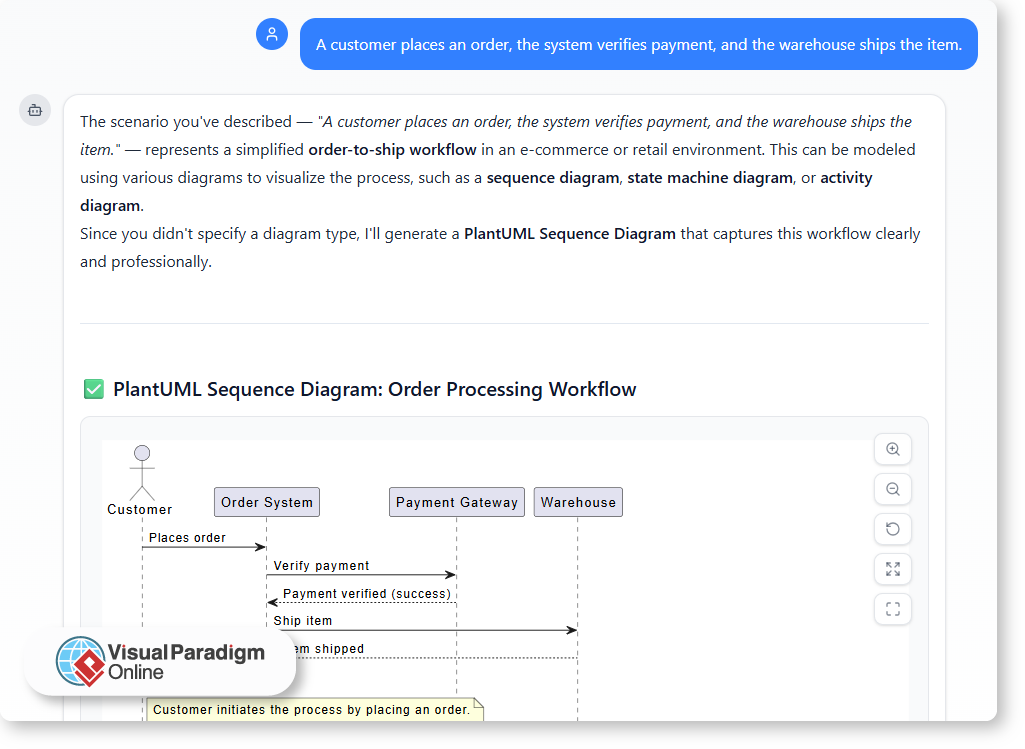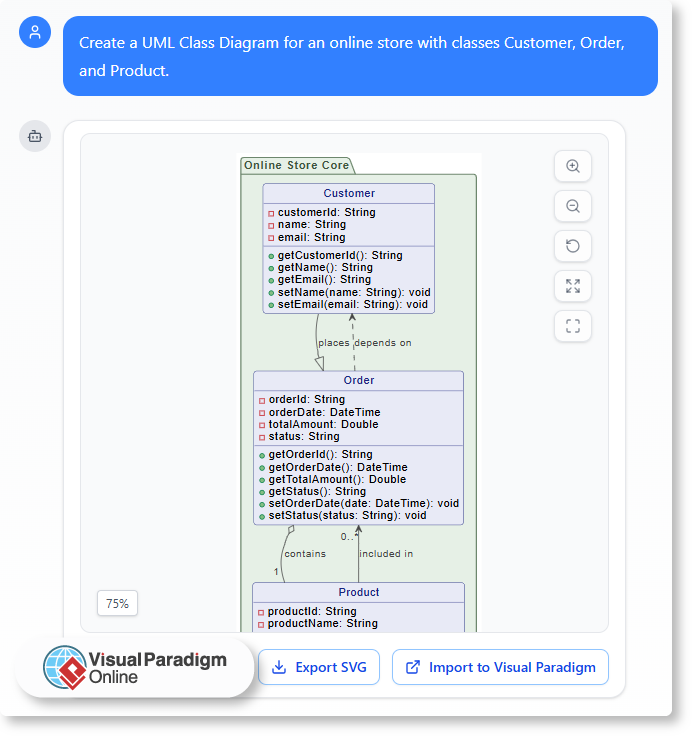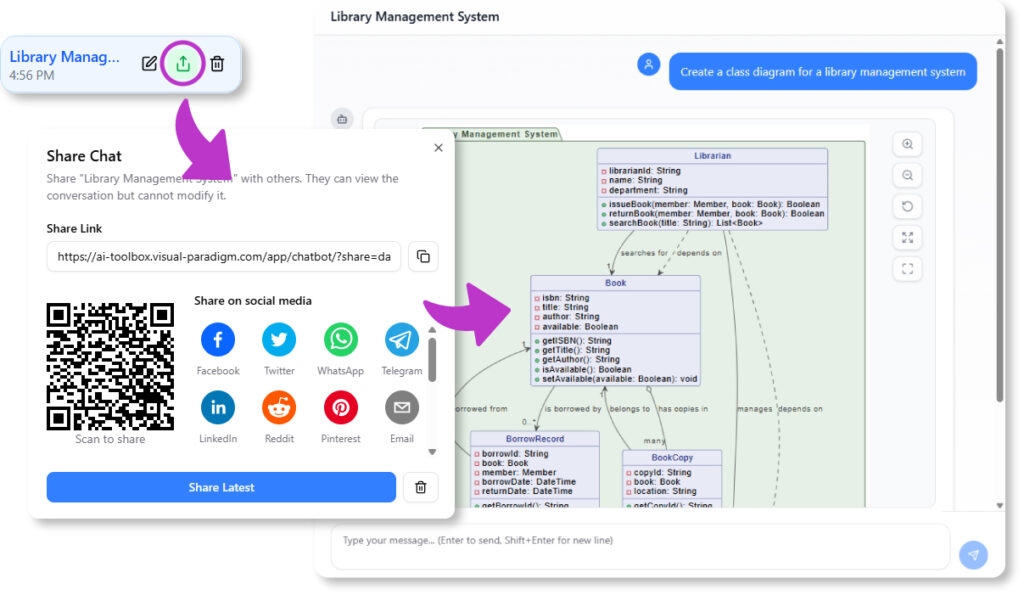How plain English brings teams closer — and how AI turns it into structured diagrams
Software design has long relied on specialized notations, diagrams, and technical documentation. But before any of that exists, ideas usually start as simple conversations: “The user logs in and views their dashboard.” The challenge is that translating those everyday descriptions into formal models often introduces confusion or inconsistency.
Natural language — when used effectively — helps bridge that gap, enabling smoother collaboration and faster understanding across diverse teams. And now, with the help of AI, plain English can be instantly transformed into formal, visual representations.
The Language Barrier in Software Design
Designers, developers, and business stakeholders often speak in different “languages.”
- Developers think in terms of classes, components, and APIs.
- Analysts write requirements and use cases.
- Clients describe goals and user experiences in plain terms.
Without a shared language, communication becomes fragmented. Technical precision is important, but it can also alienate non-technical members who need to understand system behavior. Natural language provides that bridge — an accessible, neutral medium that keeps everyone aligned before diving into structure.
From Plain Description to Clear Design
Using natural language to describe systems encourages clarity. When team members must explain how something works in words, they often uncover missing steps, unclear ownership, or hidden dependencies.
For instance, describing a process as:
“A customer places an order, the system verifies payment, and the warehouse ships the item.”
Already suggests a flow, roles, and order of actions. But turning that into a formal diagram — such as a use case or sequence model — requires interpretation. That is where AI-driven tools step in.

How AI Interprets Natural Language
Modern AI modeling assistants, such as the one in Visual Paradigm Online, use natural language processing to analyze plain descriptions and generate corresponding diagrams. You simply describe the process in your own words, and the AI identifies key actors, relationships, and interactions.
For example:
- “User logs in” → creates an actor and use case.
- “System sends confirmation email” → adds an interaction.
- “Manager reviews report” → introduces another role and process flow.
In seconds, you can see your text transformed into a visual model that follows standard notation. It makes technical structure visible, yet accessible to everyone who contributed to the initial description.
Improving Collaboration Through Shared Understanding
When natural language serves as the starting point, teams communicate more naturally and make fewer assumptions. AI supports this by acting as a translator between human intent and formal structure.
The results are clear:
- Clarity: Everyone understands the system without needing to read complex specifications.
- Consistency: The AI ensures relationships and elements are logically connected.
- Speed: The process from idea to visualization is almost instant.
- Inclusivity: Stakeholders with different technical levels can still participate meaningfully.
Another advantage of working with an AI modeling assistant is that the entire chat history can be shared. Each prompt and response documents how the model evolved — from initial ideas to refined diagrams. This shared record makes it easier for teammates to review past discussions, understand design rationale, and continue collaboration without losing context.
Instead of being a tool reserved for technical experts, diagram creation becomes a transparent, shared process where everyone can contribute and stay aligned.
The Power of Conversation in Modern Design
Software design is becoming more conversational. Instead of filling templates or manually creating diagrams, teams can now describe ideas naturally and let AI assist in structuring them. This conversational approach reduces friction, encourages collaboration, and helps teams reach consensus faster.
In platforms like Visual Paradigm’s AI Chatbot, that concept comes to life. It listens, understands, and models — turning your sentences into structured, standards-compliant visuals.
From Words to Diagrams, and Ideas to Systems
Natural language is not a replacement for formal modeling — it is the foundation. By expressing ideas clearly in words and allowing AI to handle translation into visual form, teams gain both understanding and precision.
Software design is, at its core, a communication process. And with the support of AI-powered tools, plain English has never been more powerful in bringing people and systems together.






